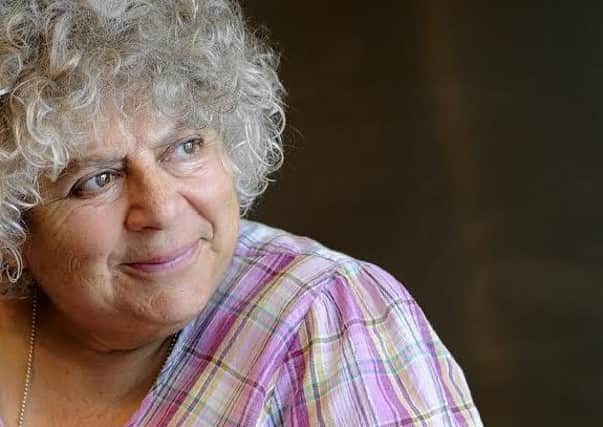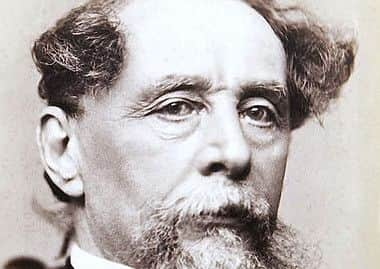A celebration of Charles Dickens in Malton


IT’S ALMOST impossible to talk about the spirit of Christmas without giving at least a passing mention to Charles Dickens.
Prince Albert is often credited with being responsible for the revival of Christmas in this country and the introduction of the Christmas tree, but many people believe it was Dickens’ popular depictions of the festive period that became a blueprint which still holds true today.
Advertisement
Hide AdAdvertisement
Hide AdThis is the person, after all, who’s been dubbed “the man who invented Christmas”. Obviously not the religious festival, but certainly the wider popular phenomenon and all the trimmings that come with it.


For instance, Dickens is widely believed to have planted the idea of a white Christmas – immortalised in A Christmas Carol – into people’s minds, even though it’s a rare sight in much of the UK.
It’s perhaps fitting then that the market town of Malton, in North Yorkshire, has chosen to launch a new festival celebrating the life and work of Charles Dickens during the festive season.
Malton has several intriguing ties with the famous writer and throughout December the town has been hosting Dickens-themed street theatre and walks, as well as a series of high-profile performances and talks.
Advertisement
Hide AdAdvertisement
Hide AdAmong those headlining the Malton Dickensian Festival is the actress Miriam Margolyes, whose one-woman show Dickens’ Women was nominated for an Olivier award, and the author and lecturer Lucinda Hawksley who also happens to be the great-great-great granddaughter of Dickens himself.
Hawksley has written about her celebrated ancestor and recognises the impact he’s had on our festive traditions, which he inspired when he wrote A Christmas Carol. “He created this wonderful story about redemption and hope. It was published on December 19, 1843, and sold all its 6,000 copies by Christmas and it has never been out of print.”
But, as Hawksley points out, there is a lesser known aspect to his life. His parents were hopeless with money and ended up in a debtors’ prison and at the age of just 12 Dickens was sent to work in a blacking factory to help boost the family’s coffers.
It’s just one aspect of his life that many people are unaware of. Those who are only familiar with his novels perhaps don’t realise that Dickens was a lifelong journalist and prominent social campaigner.
Advertisement
Hide AdAdvertisement
Hide AdHe edited two magazines at different times, and these were his mouthpiece. He campaigned on sanitation and conditions in prisons and workhouses, and said it was wrong but true that it was far more beneficial to people to go to prison than the workhouse because the workhouse gave inmates so much less food.
Hawksley points out that he visited women’s prisons, where most inmates were driven to prostitution by poverty. “He also gave passionate speeches, on one occasion firing people up so much at a fundraising dinner for the great and good in aid of Great Ormond Street Hospital that enough cash was raised not only to improve the existing building but to buy the building next door,” she says.
Dickens was a literary star during his own lifetime and today, more than 200 years after he was born, his books and their array of colourful, sometimes malevolent, characters continue to fascinate readers.
Miriam Margolyes is among his many fans after falling “in love with Dickens at school”. Ahead of her visit to Malton on Friday she spoke about her admiration of him. “I never get tired of him or the long sentences and the slow unwinding of the plot, his writing is majestic. He gave us these extraordinary characters that we’re still talking about today,” she says.
Advertisement
Hide AdAdvertisement
Hide Ad“Some people are afraid to tackle him because he’s too big, but at his heart he was a great storyteller and when you’re reading his novels you want to know what’s going to happen next. It’s been said that if he was writing today he would be writing for TV and coming up with great cliffhangers to end each episode, in the same way he had a revelation in his books.”
Dickens liked to finish each chapter leaving the reader wanting more and one of the reasons he developed this technique was because many of his novels were initially published as serialisations. “It was part of the structure of his novels but he also needed to make sure that people wanted to buy the next issue.”
Dickens has become synonymous with our image of Victorian life, but Margolyes believes this is misleading. “People think he was a Victorian but he was really a Georgian. He was born in 1812 and Victoria didn’t become queen until 1837. The Georgian times were vivid, rich, dynamic, brutal and noisy and Dickens captures the spirit of the age in his books.”
And it’s novels like Oliver Twist, Great Expectations and A Tale of Two Cities that continue to attract new generations of readers. “Dickens was full of energy and his books are bursting with life and desire. His novels aren’t old and dull they are full of passion, intrigue and humour and once you start reading them you are plunged into his world.”
Advertisement
Hide AdAdvertisement
Hide AdA large part of his broad appeal lies in his carefully sketched characters. “The reader knows very quickly who is right and wrong and who is going to be a villain. We know that Fagin is evil and we know that straight away,” she says. “At the same time there is a kind of reassurance in the way that Dickens describes the world, we feel curiously safe with him.”
He also had a profound sense of right and wrong and Margolyes believes this created a lasting legacy. “He shapes our view of the 19th Century. We know how people looked, we know what they thought and how they behaved and that’s because of Dickens, he makes that world come alive.”
It’s a world that continues to resonate with both the people who read his books and those who enjoy the raft of TV and film adaptations of his work that have amassed over the years.
“He’s up there with Shakespeare. He created these wonderful stories and wonderful characters and he’s responsible for some of the greatest prose ever written in English,” says Margolyes.
Advertisement
Hide AdAdvertisement
Hide Ad“He writes like a god but he also writes in a way that is accessible to people. Phrases like ‘it was the best of times, it was the worst of times’ and ‘Barkis is willing’ are seared into our consciousness. We remember these stories and we hug them to us – he breathes life onto the page.”
Miriam Margolyes and Friends, December 18, The Milton Rooms, Malton. Tickets are priced £10. Box Office: 01653 696 240. Lucinda Hawksley is appearing at The Talbot Hotel, Malton, on December 19. Tickets, including a festive tea, cost £25. Call 01653 639096. For more information about the festival go to www.maltondickensianfestival.com
Malton’s Dickens connection
Three years ago Malton bought a rare, signed edition of A Christmas Carol in a New York auction.
The purchase of the book was part of a high-profile campaign, spearheaded by broadcaster Selina Scott, to reclaim Charles Dickens for the North Yorkshire town.
Advertisement
Hide AdAdvertisement
Hide AdThe specially-bound edition had been commissioned by Dickens for the wife of his close friend Charles Smithson, a lawyer who lived in Malton, after Smithson died.
It is one of several intriguing link with the town. Dickens was a regular visitor to Malton and there is a long-standing belief that Scrooge’s Counting House was based on Smithson’s office on Chancery Lane in Malton, and that various Dickens characters were based upon residents of the area.